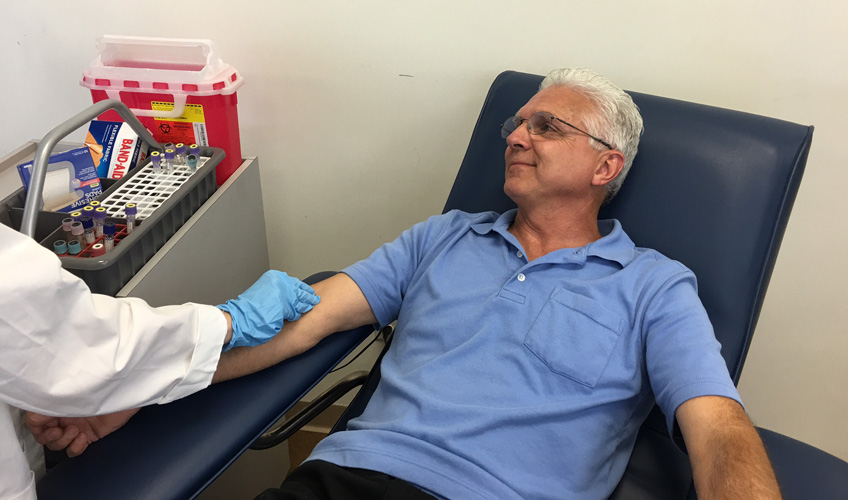Northeast Medical Institute - New Haven Campus Phlebotomy Course & Cna Class Can Be Fun For Everyone
Wiki Article
Excitement About Northeast Medical Institute - New Haven Campus Phlebotomy Course & Cna Class
Table of ContentsSome Known Details About Northeast Medical Institute - New Haven Campus Phlebotomy Course & Cna Class Get This Report about Northeast Medical Institute - New Haven Campus Phlebotomy Course & Cna ClassThe Main Principles Of Northeast Medical Institute - New Haven Campus Phlebotomy Course & Cna Class The 6-Second Trick For Northeast Medical Institute - New Haven Campus Phlebotomy Course & Cna ClassGetting My Northeast Medical Institute - New Haven Campus Phlebotomy Course & Cna Class To WorkHow Northeast Medical Institute - New Haven Campus Phlebotomy Course & Cna Class can Save You Time, Stress, and Money.
The usage of such devices need to be come with by other infection avoidance and control methods, and training in their usage.For settings with low resources, cost is a driving consider procurement of safety-engineered devices - CNA Classes. Where safety-engineered gadgets are not readily available, competent use of a needle and syringe is appropriate. Unexpected exposure and certain information concerning a case need to be videotaped in a register. Assistance solutions ought to be advertised for those that go through unintentional direct exposure.
One of the essential pens of quality of care in phlebotomy is the involvement and participation of the patient; this is equally useful to both the health and wellness worker and the patient. Clear info either written or verbal need to be readily available to every individual who undergoes phlebotomy. Annex F offers sample message for explaining the blood-sampling procedure to a person. In the blood-sampling room for an outpatient division or center, give a comfy reclining sofa with an arm remainder.
More About Northeast Medical Institute - New Haven Campus Phlebotomy Course & Cna Class
Make sure that the signs for blood tasting are plainly specified, either in a created procedure or in documented directions (e.g. in a lab kind). At all times, comply with the techniques for infection avoidance and control listed in Table 2.2. Infection prevention and control techniques. Gather all the tools required for the treatment and place it within secure and very easy reach on a tray or cart, ensuring that all the items are clearly visible.Present yourself to the client, and ask the person to specify their complete name. Check that the research laboratory type matches the client's identification (i.e. match the individual's details with the laboratory type, to make certain exact recognition).
Make the client comfortable in a supine position (when possible). Area a tidy paper or towel under the patient's arm. Go over the examination to be performed (see Annex F) and get spoken permission. The person has a right to decline an examination at any kind of time prior to the blood sampling, so it is essential to guarantee that the person has actually comprehended the treatment.
Indicators on Northeast Medical Institute - New Haven Campus Phlebotomy Course & Cna Class You Need To Know
Expand the patient's arm and examine the antecubital fossa or forearm. Situate a capillary of a good dimension that is noticeable, straight and clear. The diagram in Area 2.3, reveals typical positions of the vessels, however several variations are possible. The typical cubital blood vessel exists in between muscle mass and is generally one of the most simple to penetrate.DO NOT insert the needle where veins are diverting, because this raises the opportunity of a haematoma. Finding the capillary will aid in determining the proper dimension of needle.
Haemolysis, contamination and visibility of intravenous liquid and medication can all modify the outcomes (39. Nursing team and medical professionals may access central venous lines for specimens complying with procedures. Nevertheless, specimens from have a peek here main lines carry a risk of contamination or wrong lab test results (https://worldcosplay.net/member/1785829). It serves, however not ideal, to attract blood samplings when very first introducing an in-dwelling venous gadget, before linking the cannula to the intravenous liquids.
Some Ideas on Northeast Medical Institute - New Haven Campus Phlebotomy Course & Cna Class You Should Know
Failing to permit enough contact time boosts the risk of contamination. DO NOT touch the cleaned website; in certain, DO NOT position a finger over the blood vessel to lead the shaft of the subjected needle.Ask the individual to develop a fist so the capillaries are extra noticeable. Get in the vein quickly at a 30 degree angle or less, and continue to introduce the needle along the blood vessel at the most convenient angle of entrance - PCT Training. As soon as enough blood has actually been gathered, release the tourniquet prior to withdrawing the needle
The Single Strategy To Use For Northeast Medical Institute - New Haven Campus Phlebotomy Course & Cna Class
Withdraw the needle carefully and apply gentle pressure to the site with a clean gauze or completely dry cotton-wool round. Ask the person to hold the gauze or cotton wool in location, with the arm prolonged and elevated. Ask the client NOT to bend the arm, since doing so causes a haematoma.
The Buzz on Northeast Medical Institute - New Haven Campus Phlebotomy Course & Cna Class
Where possible, keep the tubes in a shelf and move the rack towards you - https://penzu.com/p/b54c843834982687. If the sample tube does not have a rubber stopper, inject extremely gradually into the tube as reducing the stress and rate utilized to transfer the sampling minimizes the risk of haemolysis.
Report this wiki page